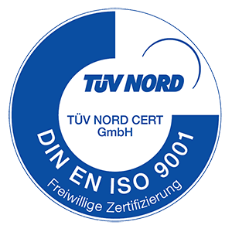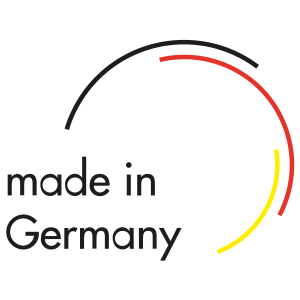It’s All about the Surface
Threaded spindles are a popular design element in mechanical engineering. High-stress threaded spindles, for instance, are particularly prevalent in mechanical lifting jacks and in heavy-duty lifting equipment. The threaded spindles used in these areas are primarily manufactured through a whirling process. Threaded spindles that are produced by rolling processes often have very smooth surfaces that encourage slip-stick and have a negative effect on the service life of the system as a whole.
The surface topography of threaded spindles produced through whirling can act as a lubricant reservoir and thus reduce friction in the contact between the spindle and nut. The Institute for Production Engineering and Machine Tools (IFW) at Leibniz University Hannover is currently researching the generation of tailored surface topographies in whirled trapezoidal screw drives. Together with the company Bornemann Gewindetechnik GmbH & Co. KG (www.bornemann.de), it is researching tailored surfaces of thread flanks to optimise friction performance, based on the example of threaded spindles with trapezoidal threads.
The aim of the IFW and Bornemann “TopGewinde” (or “top thread” in English) project is to develop an innovative whirling process for producing microstructures that minimise friction on the flanks of threaded spindles (image 1). The project involves using IFW’s own CutS (Cutting Simulation) software to build a whirling simulation model for providing virtual predictions of the surface microstructure. The kinematic model in image 1 was set up in the same way as the Bornemann whirling process.

Material Ratio Curve Defines the Lubricant Reservoir
The intention is to design these machining marks to optimise the tribological properties between the spindle and nut on the trapezoidal thread. Lubricant can be collected in the valleys of the surface profile to prevent inadequate lubrication and the problems associated with that, such as slip-stick (image 2).

A characteristic value is required to quantify the ratio of the lubricant reservoir on the thread flank. The material ratio curve can be used to assess tribologically stressed surfaces. This curve breaks the roughness profile down into the reduced peak height Rpk, the core roughness Rk and the reduced valley depth Rvk. The core roughness Rk describes the area of the roughness profile that remains in tribological contact after the threaded spindle passes its initial phase of the product life cycle and the roughness peaks are worn down (described by the reduced peak height Rpk). The reduced valley depth Rvk describes the area in the initial surface that is available for the storage of lubricant. The roughness surface parameters Spk, Sk and Svk are equivalent to these values. The current project uses these surface parameters in the development of the new whirling process. The parameters will also be used to assess surfaces in any future series production with the new whirling process at Bornemann.
Experimental Topography Optimisation
To start with, the process parameters in the production of a trapezoidal thread spindle were varied to assess the influence of the whirling on the surface topography. This series of tests focussed on the tool speed nwz and workpiece speed nws (image 3). Since whirling involves rotating both the workpiece and the tool, the speed ratio r between the rotation of the tool and workpiece is established and included in the evaluation of the surface topographies. The examined trapezoidal thread spindles were produced with a whirling machine tool made from C45 steel that Bornemann Gewindetechnik developed itself. The screw drives were machined with equal rotating direction of work piece and tool. The topographies produced on the thread flanks were then analysed at the IFW using a confocal microscope made by Confovis GmbH. The topographies created and their corresponding Abbott parameters are depicted in image 3. The two top measurements show the influence of the tool speed on the surface topography. The bottom topography measurements show the resulting topographies at different workpiece speeds. The aim of the study was to achieve a high value for the reduced valley depth Svk in order to create the largest possible volume for lubrication reservoirs on the surface. The highest Svk value achieved was in test 1, with an Svk of 0.442 µm. This threaded spindle also has the lowest speed ratio. The trend of the Svk value decreasing as the speed ratio increases can be seen throughout the entire series of tests. The reduction in the speed ratio increases the spacing between the structures and increases the reduced valley height Svk.

Virtual Topography Prediction
The IFW is currently using simulations to analyse the correlation determined through the experiments. To do so, it is using a material removal simulation to examine the produced topography. It will establish a simulation model for whirling threaded spindles with the software CutS in order to predict the resulting surfaces (image 4). On the one hand, this will provide a better understanding of surface formation during whirling; on the other, it will reduce the time and effort required for the experiments. Image 4 compares the measured topography and the result of the simulation. The kinematics of the Bornemann whirling process are represented in the simulation. The maximum roughness on the flanks of the whirled trapezoidal threads is within a range of Rz = 3–7 µm. To build a reliable model for predicting the surface topography at this scale, other influences on the process are taken into account. In the simulation shown here (image 1), the cutting tool microgeometry of the indexable inserts was also taken into account in addition to the kinematic contact conditions. To factor in the cutting tool microgeometry, a CAD model of the cutting edge with the roughness profile producing the surface was introduced into the material removal simulation. A particular feature of the whirling process is that different areas of the trapezoidal thread profile are produced by multiple cutting edges on indexable inserts. The roughness profiles of a set of indexable inserts was measured and incorporated into the model to account for the influence of the indexable inserts on the simulated surface:

The surface structure of a whirled threaded spindle can be basically reproduced by the material removal simulation. The regular intervals of the valley structures, which are characteristic of whirling, can clearly be seen on the surface generated in the simulation. Deviations between the simulated and measured surfaces can be seen in the formation of the valleys. The percentage deviation between the roughness characteristics of the measurement and simulation are currently around 25%. These differences between the two surfaces are caused, for example, by stochastic surface effects and the deflection of the tool during the process. There are plans to include additional process influences to increase the accuracy of the simulation. The vibration behaviour of the machine tool is the current focus in this regard. There are also plans to examine the process forces acting on the tool cutting edge. In this case, the eccentric rotational movement and variable stress cross-sections during whirling are expected to have an influence on the deflection of the whirling tool. In the future, the knowledge gained in the process simulation will be used specifically to develop tools for producing tribologically optimised threaded spindles through whirling.
Conclusion and Outlook
Over the further course of the project, the tools used and associated process parameters will be modified to achieve a friction-optimised surface. To assess the friction-reducing effect of these surfaces, tribometer tests will first be performed. Using these tests as a basis, different tool concepts will be selected and used to produce the tribologically optimised spindles. Finally, a selection of spindles will be subjected to a life cycle test to verify the findings gathered. A particular aim of Bornemann Gewindetechnik GmbH & Co KG is to define a friction-reducing microstructure that can be used to significantly extend the service life of lifting systems in the field of heavy-duty lifting equipment.
You can also find more information about optimising the structure of thread surfaces at www.bornemann-gewindetechnik.de/en and www.youtube.com/bornemann-gewindetechnik.
» Zurück zur Artikelübersicht


Comments are closed here.